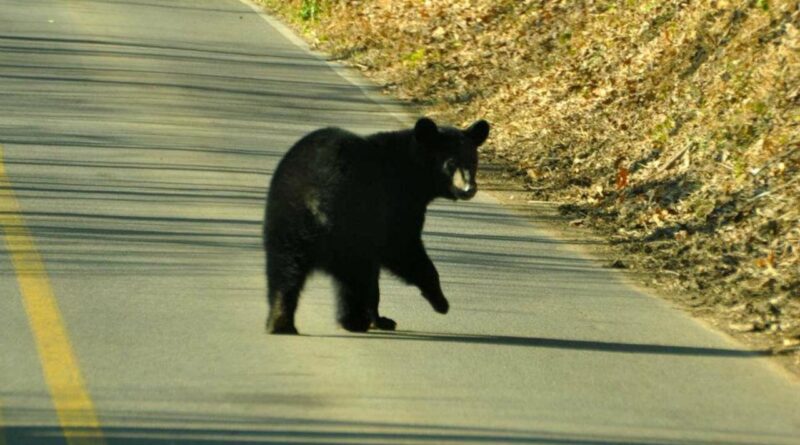5 bears hit by cars in a week at Delaware Water Gap in “disturbing” fashion.
Five black bears were hit by vehicles at the Delaware Watershed National Recreation Area in the first week of November, prompting park officials to be on alert as more wildlife disasters.
Five bear collisions have occurred on Route 209, a highway that runs through the Pennsylvania side of the Delaware Water Gap, US National Park Service officials said in a social media post.
“Even when cars collide, there are usually a few a year, not so many in one week,” the post said.
The bear attacks came days after park officials reported what they called a “disturbing increase” in vehicles and wildlife along the 20-mile stretch of Route 209 that runs through the area. national entertainment.
Four more black bears were killed in October, along with 11 deer, a coyote and three other unspecified animals, for a total of 19 animals. It marks a significant increase from October 2023 , while nine animals, including two bears, were reported in the park.
Delaware Water Gap officials warned park visitors to slow down and be careful on the roads, spokeswoman Kathleen Sandt said. Park Police will target speeders on Route 209 in the coming weeks and issue more citations, he said.
“We cannot stress enough how important it is to watch for wildlife, respect and follow posted speed limits, and pay attention while driving,” park officials said in a statement. .
It was not immediately clear if the unexplained rise in incidents was unique to the Delaware Water Gap, which straddles the New Jersey-Pennsylvania border, or if other parks have seen similar increases. It was also unclear whether the recent drought, climate change or other factors have pushed more wildlife closer to the highway compared to previous years.
The New Jersey Department of Environmental Protection has also raised the maximum number of car shots of bears so far in 2024 compared to the same period in 2023, state officials said. But, bear experts and advocates cautioned against making direct comparisons from year to year.
Angi Metler, co-founder and executive director of the New Jersey Animal Protection Alliance, told NJ Advance Media that the trick doesn’t compare bear deaths between years, although it does track them.
“It’s apples and oranges,” Metler said of the numbers, which are difficult to track accurately. Each year, bear numbers fluctuate along with other difficult-to-measure variables such as food availability and the effect of weather.
A spokesperson for the Woodlands Wildlife Refuge, a sanctuary in Hunterdon County, said their group has not seen an increase in reports of vehicles hitting wildlife.
But Giselle Smisko, co-founder of Sussex County’s Avian Wildlife Center in Wantage, says her group often sees injured owls brought in this time of year after being hit by drivers on dark, busy roads.
If a driver hits an animal or bird, Smisko said to contact the police and a licensed animal correctional service.
He said: “We find many birds survive the first attack of the car, but they are injured. “Leaving the bird on the side of the road and driving is not advised.”
Lynn Rogers, a biologist who has spent more than half a century studying black bears, said a long-term solution to the encroachment of wildlife by vehicles is hard to come by. Some areas have wildlife corridors, which are often green-covered paths that cross busy roads specifically for wildlife.
But, those predictions often “don’t work” in practice, Rogers said.
Thank you for relying on us to provide local news you can trust. Please consider sponsoring NJ.com by voluntary subscription.
AJ McDougall can be reached at amcdougall@njadvancemedia.com. Follow him on X at @oldmcdougall.
#bears #hit #cars #week #Delaware #Water #Gap #disturbing #fashion
